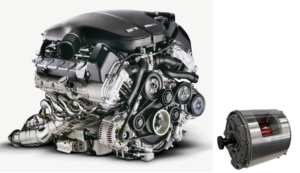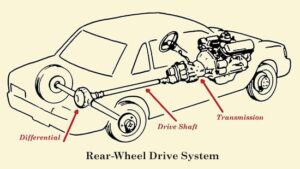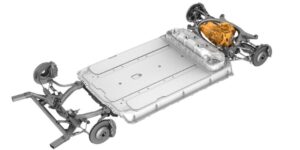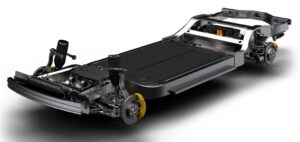Most of us, on learning about electric vehicles assume it is a new invention. In fact, the electric car predates the internal combustion engine vehicles on our roads today (Robert Anderson 1832 and Carl Benz 1886 respectively). I will attempt to explain in this article, why the internal combustion engine became the dominant motor for land transport and why we are in the beginnings of an inexorable change to electric vehicles.
My aim is to clarify with simplification. This is decidedly not an academic treatise, neither is it an exercise in intellectual masturbation.
The purpose of transportation is to move goods or people from point A to B at a reasonable cost & comfort. The catch is that this is fundamentally an energy problem. We need to convert potential energy to kinetic energy. This kinetic energy will then be used to provide traction for the vehicle carrying goods and/or people.
Thus, we require two fundamental things
- A source of potential energy and a way to carry that energy in the vehicle (ENERGY STORAGE)
- A device to convert that potential energy into kinetic energy (A MOTOR)
That is it; you don’t need a physics or engineering degree. If you understand the place of energy storage and motors in transportation, you will understand why electrification of transport is inevitable. Let us first talk about motors.
MOTORS
The purpose of a motor is to convert potential energy into kinetic for traction. Motors are generally designed to convert a particular kind of potential energy into kinetic energy.
So, irrespective of the type of motor, the output is always the same: some kind of motion. The input energy will however vary, based on the type of motor.
There are two fundamental motors in use today:
- THE HEAT ENGINE. This is further divided into four types,
- External combustion (steam engine). Now archaic.
- Internal combustion engine (ICE). Further subdivided into the diesel and petrol engines. Used in land and marine transport.
- Jet engine. Used in aviation
- Rocket engine. Used for space exploration.
- THE ELECTRIC MOTOR. Converts electric current into motion. This is also further subdivided into two major categories
- DC electric motors
- AC electric motors
THE HEAT ENGINE
In the heat engine, burning (combustion) releases the potential chemical energy of a fuel. In the days of the steam (external combustion) engine, the fuel used was coal. Today, the fuel type used is likely to be fossil (refined petroleum products or natural gas). The heat released by combusting this fuel is then converted into rotary motion for traction of the vehicle.
Since the focus of this article is on land transport, the type of heat engine we will focus on is the internal combustion engine. The phrases “heat engine”, “internal combustion engine” and “ICE” are therefore used interchangeably.
THE ELECTRIC MOTOR
Electric motors work due to magnetic fields, those invisible force fields around magnets. Basically, there is a law that says if you have any two of electric current, magnetic field and motion aligned adjacent (90o) to each other, the third will appear adjacent to all three.
Thus, if you have an electric current (moving electric charges) at 90o to a magnetic field, a source of motion will appear also at 90o to both the current and magnetic field. In other words, all three will be at 90o to each other.
The device that is arranged in such a way that the magnetic field and electric current flowing through it produces motion is what we called the electric motor. Since there are two types of electric current (Direct Current or Alternating Current), electric the motor is subdivided into DC motor or AC motor based on the type of input current. Of course, these two major types can also be further subdivided into permanent or induced magnet motors based on (you guessed it) whether the magnet type is either permanent or an electromagnet.
As an aside, the electric generator is a device arranged in such a way that, motion and magnetic field at 90o to each other produce a source of motion.
To summarize,
electric motor: electric current + magnetic field = motion
electric generator: motion + magnetic field = electric current
Most of the electric motors used in EVs are technically called electric devices. These electric devices can technically change from a motor into a generator. i.e. they can use the motion of the car to generate electric current while stopping the vehicle, instead of vice versa. This method of braking an EV is called regenerative braking. This is different from normal braking where the brake pad of the car uses friction to physically stop the vehicle.
COMPARING THE INTERNAL COMBUSTION ENGINE (PETROL/DIESEL ENGINE) AND THE ELECTRIC MOTOR

Just look at that! These are actual pictures of an electric motor and an ICE of similar power. IF a picture is indeed worth a thousand words, then the above picture explains in succinct detail almost ALL the reasons why the electric motor is more superior form of traction compared to ICE.
It is immediately apparent to even the casual observer, how bulky, heavy, complex and ungainly the ICE is. Conversely, the electric motor is far smaller, lighter, less complex and more portable. This makes the electric motor incredibly efficient.
Again, look at the number of moving parts, belts etc of the ICE, and you will understand why you are required to do quarterly maintenance on your engine, why you need engine oil and why invariably, most of your maintenance expense on your car have to do with your engine. A normal petrol/diesel engine has close to 2000 precisely machined moving parts.
Another result of the complexity of the petrol diesel engine is how it serves as an entry barrier to companies/countries that want to enter the automotive industry. There is an automotive industrial park in Kumasi (the second biggest city in my country Ghana), the artisans there can do almost anything about a car save one, the engine. Engine manufacturing requires highly specialized skills, precise machining, and advanced metallurgy know-how.
This is why the Germans have been dominant in the automotive industry for so long. The internal combustion engine was arguably invented by a German after all. It’s their core competence. It took the Japanese and Koreans a minute to copy and perfect it. And they all first started by manufacturing the car and importing the petrol/diesel engine from the Americans/Europeans. Until they have built up sufficient financial and technical know-how.
To put this in an economic context, an automotive plant that produces say 250,000 cars a year needs an engine plant that is FOUR times its size where the necessary 250,000 engines will be assembled. These engine plants are fed materials by hundreds of specialized small and medium-scale parts suppliers.
There are piston suppliers for example. This piston manufacturer requires specialized machinery that will be supplied to it by the machinery manufacturer. The piston manufacturer requires specialized metals for their pistons. Now think about ALL the JOBS and MONEY (value) created by hundreds of suppliers like this piston supplier and the engine manufacturer itself. Now think about the tax revenue the German government makes from this value chain. So, when they tell you 10% of German GDP is due to the automotive industry, they may not be lying but the socioeconomic impact is definitely more than 10%.
Now think about what happens if suddenly, cars don’t require this complicated contraption called the internal combustion engine again? What happens to all the engine manufacturers and the suppliers that depend on them? Ditto for all their employees and the value they create? What happens if anyone can produce their own car and just buy the necessary motor/controller from Ebay/Amazon/Alibaba. Try it, just search for “ev motor” on any of these platforms.
Don’t get me wrong, some of these SME suppliers have other customers apart from engine plants. But, even these, the automotive industry represents a large chunk of their business.
Fortunately for us in Africa, our ineptitude serves as an advantage to us because, so far as I know, we do not manufacture internal combustion engines. That’s zero, nada, zilch or as we say in Ghana, foko.
The simplicity of the electric motor means comparatively no (low) maintenance. You seldom think about it but the fan in your house is powered by an electric motor, albeit a less powerful one. When was the last time you did yearly maintenance on your fan? What about an oil change? Fan belt? You get the picture. Or as I like to say, a motor, is a motor, is a motor.
Of course, motor manufacturing requires specialized know-how and capital as well, but nowhere near the level of the internal combustion engine.
The amount of power an engine produces compared to its volume or mass is known as the power to volume ratio or power to weight ratio respectively. The higher either of these numbers is for an engine, the better. Ideally, engineers want a small, light engine of sufficient power.
Have you noticed that all the petrol/diesel (ICE) cars on our roads have the engine located in either the bonnet (front) or in some rare cases (boot)? This is simply due to an inability to produce a small enough internal combustion engine of sufficient power after over a century of effort. Since the engines are not located near the tyres, you also need a transmission to carry the engine’s motion to the tyres. You need a heavy flywheel, exhaust system, clutch etc because of the nature of the engine. Thus, a very complicated petrol/diesel engine requires a multitude of supporting systems which further increases complexity. And increased complexity just results in more points of potential failure and inefficiency.

A major effect of the power to volume/mass ratio of the internal combustion engine is safety. You have this big bulky engine in either the bonnet/boot of your vehicle. That means that your car is either front/back heavy by default. The engineers will engineer the vehicle to balance the mass of the engine of course.
But, what happens if your vehicle is involved in a frontend or backend collision? According to the immutable laws of physics, the heavy engine block will simply shift into the cabin of the vehicle. Crushing and maiming any inhabitants therein. Engineers design vehicles so that the engine block drops to the floor to avoid this occurrence. However, its not always to borrow a phrase that “the centre cannot hold”.
Due to the much better power-to-weight ratio of the electric motor, it is not constrained to be placed in either the bonnet or boot. They can be placed alternatively on either the axle like the Tesla Model 3 or the wheels of the vehicle like the Rivian R1T pickup.

The placement and nature of the electric motor make it possible to eliminate components like transmission, exhaust systems, etc from the drivetrain. This results in a number of benefits: dramatic cost savings on the drivetrain. Improved safety for passengers. Lastly, improved efficiency and low maintenance due to less complexity.

SUMMARY OF COMPARISON BETWEEN THE INTERNAL COMBUSTION ENGINE AND THE ELECTRIC MOTOR
| S/N | CATEGORY | ICE | ELECTRIC MOTOR | COMPARISON |
| 1 | Power to weight ratio (kW/kg) | 1.6 | 4.3 | 3X power |
| 2 | Power to volume kW/L | 0.4 | 13.6 | 40x smaller |
| 3 | Engine Efficiency (%) | 20-25 | 90-98 | 3-4x efficiency |
| 4 | Number of moving parts | Hundreds of precisely crafted moving parts | One | simplified cost & manfucaturing |
| 5 | Maintenance | Lots of regular maintenance due to wear and tear from the heat and explosions | Significantly lower maintenance | cheaper to maintain |
| 6 | Supporting systems | Requires complex supporting systems: starter, transmission, gearbox etc | Requires an inverter and controller | cheaper to maintain |
| 7 | Health effect | Produces unhealthy exhaust fumes: particulate matter, carbon monoxide, sulphur oxides, nitrous oxides, unburnt fuel etc | No tailpipe emissions | Healthier |
| 8 | Global warming due to tailpipe emissions | Every liter of petrol produces 2.3kg of carbon dioxide (CO2), a greenhouse gas | No greenhouse gas | Better for our planet and species |
| 9 | Longevity (km) | 250,000 | 1,000,000 | More robust and longer lasting |
| 10 | Regenerative braking | No | Yes | Can recover some energy whilst driving |
| 11 | Instant Torque | No | Yes | accelerates smoothly and consistently |
| 12 | Can run on renewable | No | Yes | cheaper and cleaner |
Table 1. Comparison of internal combustion engine and electric motor
With all these advantages, why did the ICE drivetrain reach mass market instead 1st instead of the electric drivetrain even thou the electric drivetrain is so superior?
After all, the first petrol cars were noisy, smelly were hand-cranked to start them. While their EV counterparts were silent, clean very easy to operate.
Invented by Charles Franklin Ketering, the electric self-starter for ICE vehicles played a significant part. But, the real Achilles heel for early EVs was their range. These EVs have ranges measured in tens of kilometers whilst their petrol/diesel counterparts have ranges in hundreds of kilometers.
Range, however, is a function of the fuel (energy source) of the engine and how that energy is stored in the vehicle (energy storage).
In part 2 of this article, we will zero in on energy and energy storage for both ICE vehicles and electric vehicles.
Stay tuned!
Gad is the founder and Executive Director of AfricaNEV
Socials: Facebook & LinkedIN – Gad Senyuiedzorm Ashiagbor;
Twitter -@walencho; email –walencho@gmailcom
AfricaNEV (Africa New Energy and Vehicles) is a continental non profit that aims to accelerate the adoption of e-mobility in Africa by policy advocacy, awareness creation and linking industry players in the value chain.
Socials: Facebook, LinkedIN, Twitter –@walencho; email –africanev@gmailcom










